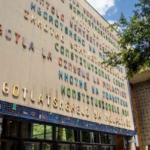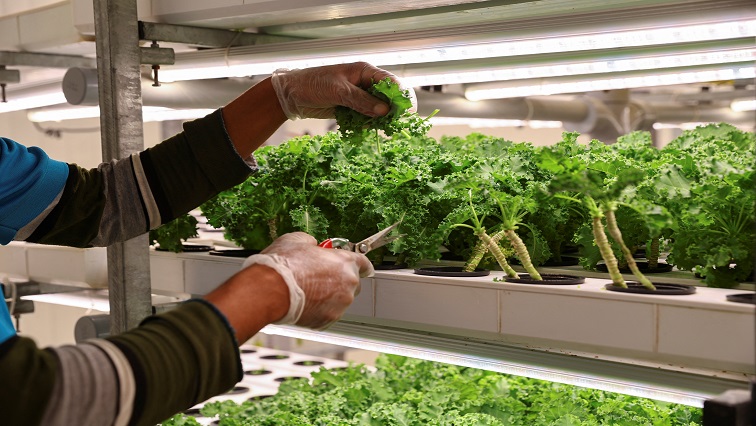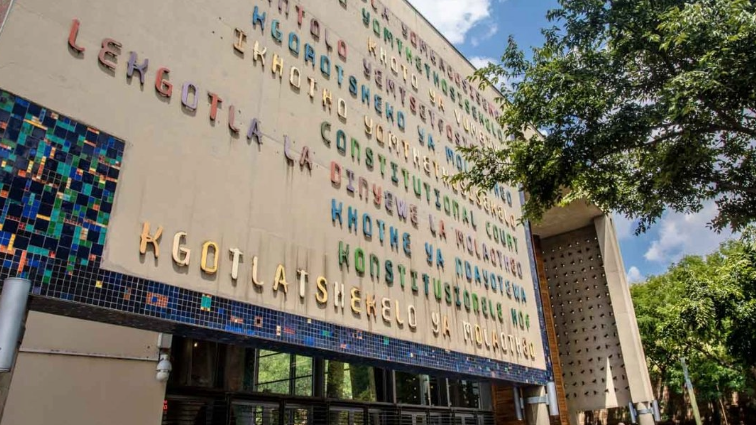-
A worker harvests baby kale grown at the vertical nutrient film technique (NFT) system
The pressure on wild food sources in the ocean and on land has reached a point where it cannot sustain the world’s population any longer. That’s according to Durban-based chef, Johannes Richter. He believes that the use of sustainable agricultural methods can lessen the impact of people’s food needs on nature.
Richter uses mostly locally grown heirloom crops, which are produced sustainably. Heirloom crops offer plant varieties that come in a wide range of shapes, colours, and tastes compared to the mass-cultivated vegetables you buy in the supermarket.
It’s a hot sunny day in Howick, KwaZulu-Natal Midlands. Birds are singing in the shadows of indigenous trees that farm manager Deon Bean planted 18 years ago on the farm, Blue Hills.
Bean studied nature conservation and became a farmer, working on the farm as a first-year student. He says his aim in farming is first to care for nature – also known as permaculture.
In short, Bean practices sustainable farming, cultivating a large variety of heirloom crops.
“I think our first priority is to look after the soil and the organisms within that. And then that translates to very, very low pests and diseases. So we do a whole mixture, especially with the animals as well. Because we make our own compost on-site. Either scraps go to them and the manure goes to the garden. So it’s a full circle.”
Livestock like pigs, goats and chickens form as much of a role in cultivating heirloom crops, as the seeds that Bean and his wife Chisomo sow.
Bean says what started out as a household vegetable patch has turned into a heirloom niche market. Heirloom crops can be described as a diversity of crop varieties, used for thousands of years, compared to the mass-cultivated produce you buy in a supermarket.
“If and when we bring seeds in from overseas, especially the northern hemisphere, we find that germination rate is very low. And because of the climate here, you will find quite a bit of strugglers. But those that we pull through and harvest seeds from, your next generation is very strong. And they’ve now acclimatised, within a season.”
Award-winning Durban botanical artist – Daleen Roodt – visits Blue Hills to paint one of the varieties of heirloom tomatoes that Bean has planted – the Traveler’s Tomato.
She will be entering these paintings in the Botanical Art Worldwide exhibition next year in May – which will be showcasing the genetic diversity that exists in a world challenged by population growth and climate change.
Roodt says the ugly tomato – as she and Bean called it at first – has revealed a gem to the artist’s eye.
“There is this whole dimension of just beauty that suddenly unveils itself. Like you start to notice all the different colour varieties. You see how the light reflects off the very shiny surface. How it moves through the translucent cells of the tomato. And even if you look closely – it’s very hard to see with the naked eye – but there’s a microscopic almost, of tiny little hairs covering the skin. Just like we have hairs on the skin of our faces. And these things you only start to notice once you look carefully and you start to paint it.”
From farm to plate, Chef Johannes Richter runs the restaurant – The LivingRoom in Cowies Hill. Here, over 80% of the produce he uses are heirloom crops sourced from local growers, like Bean.
“But in the end, the crops that we get in from simple things like carrots and beetroots, the flavour is just not comparable to what you get in the store. A, because you’re cutting out middlemen on each side. So, you’re getting the produce fresher. And B, because of the varieties that they grow that aren’t meant to just pump out produce of volume in very short spans of time. Because obviously the longer something takes to grow, the more water it needs, the more manpower it needs . . . or labour it needs, etcetera, etcetera, etcetera . . . With the focus not being to worry about that but rather what would taste like that they produce.”
Richter specially whipped up a salad to showcase the farm’s produce. Each morsel scooped up with a spoon offered a different taste sensation – creamy tomato, fresh and crunchy beetroot and zucchini, a sweet guavadilla dressing, with sharp mustardy notes from onion flowers.







